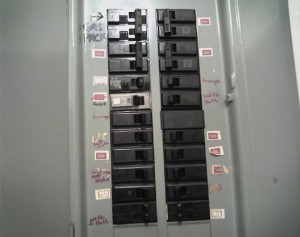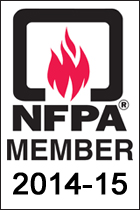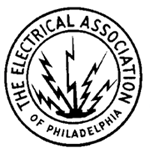 Electricity is a safe and convenient source of energy for heat, light and power in your home and on your farm, provided it is distributed in correctly sized and properly protected conductors. Good wiring systems are safe and energy-efficient.
Electricity is a safe and convenient source of energy for heat, light and power in your home and on your farm, provided it is distributed in correctly sized and properly protected conductors. Good wiring systems are safe and energy-efficient.
Because of their convenience, households have accumulated many electrical appliances. While these labor-saving devices are helpful in the home, property owners often fail to give proper attention to the wiring system that serves them. In our desire to reduce human work loads, we very often overwork the electrical home wiring system and its control devices. Energy-efficient appliances should always be served by good wiring systems.
Many older homes and service buildings are not adequately wired to serve today’s electrical loads. Some new homes fall into this category, too. The safety of the system depends first on how well you have maintained the safety valves — your electrical fuses or your circuit breakers. It also depends upon the care taken by the home builder or electrician in the placement of electric cables. All cables in attics should be placed on top of attic insulation materials. It is especially important that circuit conductors that carry near-capacity current are on top of attic insulation so that heat generated within cable jackets will not be trapped. Where a circuit carries near-full load (90 to 100 percent of rated capacity) for long periods of time and heat is trapped by attic insulation, the conductor insulation could deteriorate.
Solutions are:
- Avoid covering conductors with insulation.
- Derate circuit amperage by using next lower size fuse or breaker (for instance, fusing a number 12 conductor with 15 amp protection and adding additional circuit capacity as needed).
- Hire a licensed electrician to troubleshoot
Every safe home wiring system should equal or exceed the requirements of the National Electrical Code. But more than that, every system should be designed for economy of installation, operation, expandability and maintenance. The code itself is chiefly concerned with safety. Thus, it is usually desirable to install systems that exceed code standards. It is more economical to plan an adequate and easily expandable system than it is to rewire after your home has been built.
Detect poor wiring
Any system should avoid excessive voltage drop, wasted energy and overheated wires. You need not have a fire or an appliance failure to discover overloaded circuits, and you need not be an expert to determine whether your home wiring system needs attention. Look for symptoms of poor wiring:
- Fuses blow or circuit breakers trip often.
- Too few switches, outlets and lights.
- Extension cords frequently used.
- Lights dim and TV picture shrinks when refrigerator or other equipment starts.
- Toaster and electric iron heat slowly.
Fuses or circuit breakers of greater amperage will not correct too-small wiring or low-voltage problems, but proper circuit protection will ensure safe use of what you have. If you don’t have enough circuits to serve all of your electrical equipment, consult an electrician or power supplier; you will probably need a larger service entrance. If rewiring becomes necessary, develop a wiring layout with help from local electrical specialists.



